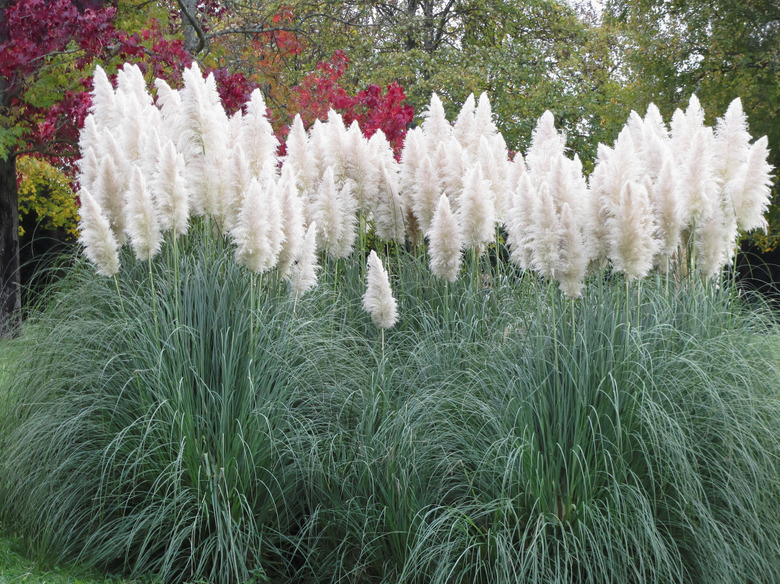How To Grow Pampas Grass In Containers
Pampas grass (Cortaderia selloana, U.S. Department of Agriculture plant hardiness zones 7b through 10b) is a tall-growing, in-vogue, ornamental grass originating from South America. While grasses with plumes like pampas are coveted by many for their soft, bohemian look, pampas grass is unfortunately also an aggressively growing perennial species that is now recognized by many regions as an invasive species. If you're interested in adding a grass alternative like pampas grass to your landscape design without running the risk of endangering your native wildlife, consider planting pampas grass in pots.
Growing Pampas Grass in Pots
Any successful pampas grass potting project starts by answering two questions: Where and when? Where will the pampas grass live in your yard? Pampas grasses love bright, sunny locations, so find a spot in your yard where your pampas plant can soak up ample sun.
Regarding timing, when is the best time to plant pampas grass? Planting ornamental grasses, like pampas grass, is best done in the fall. This is because while the above-ground portions of plants like these generally go dormant growthwise between fall and winter, their roots keeping growing. Therefore, if you plant these beautiful grasses in the fall, you're giving them ample time to spread their roots during those colder months so that by the time spring and summer arrive, they're ready to grow into those big, tall grasses with plumes that are so admired.
How to Plant Pampas Grass in Pots
With the where and when accounted for, get started planting pampas grass in pots by finding big 10-gallon nursery pots with plenty of drainage holes. Pampas grass can grow up to 10 feet tall, so it will need a substantial soil base to stay well protected and fed. Fill your pot a third of the way with potting soil mixed with a bit of sand to increase the drainage. If you can get your hands on some good compost, mix that into your soil mixture as well for added nutrients. The blend can be equal parts potting soil and compost.
Next, place the root ball of your pampas plant in the pot. If the roots are bound at all from being in the original potting container, loosen them a bit with your fingers. With your root ball in place, fill the pot to the rim with the potting soil and compost mixture. The root ball should be completely covered and should not protrude from the top of the pot. Water your newly potted pampas grass plant until water streams out through the drainage holes. Additionally, if you are potting younger, less stable pampas, plant it in pots with a stake to support your plant's growth. Drive the stake into the soil and loosely secure the pampas grass to the stake with a garden tie.
If you want to start this process with pampas grass seeds instead of transplants, place about five seeds into sterile seed-starting soil inside a 4-inch potting container. Position your seedlings indoors in a sunny spot. Keep the soil moist for four to six weeks before transplanting the new pampas plants into bigger pots.
Caring for Your Potted Pampas Plant
Though pampas grass is naturally drought-tolerant, when it lives inside a pot rather than the ground, it will need regular weekly waterings. Every three years, to maintain its size and health, divide your pampas grass and replant it in two to three pots depending on how big your plant grows.
Another safety tip to bear in mind with pampas grass is that its foliage can get quite sharp. Make sure to position your pampas grass in an area where it won't brush against you or your house guests. Additionally, when caring for these plants, always wear gardening gloves to protect your hands.
References
- University of Georgia Extension: Pampas Grass
- Clemson Cooperative Extension Home & Garden Information Center: Planting Shrubs Correctly
- University of California: Environmental Horticulture Notes – Ornamental Grass
- University of California: Pampasgrass and Jubatagrass
- Home Depot: Planting Ornamental Grasses in Containers
- NC State Extension: Cortaderia selloana
